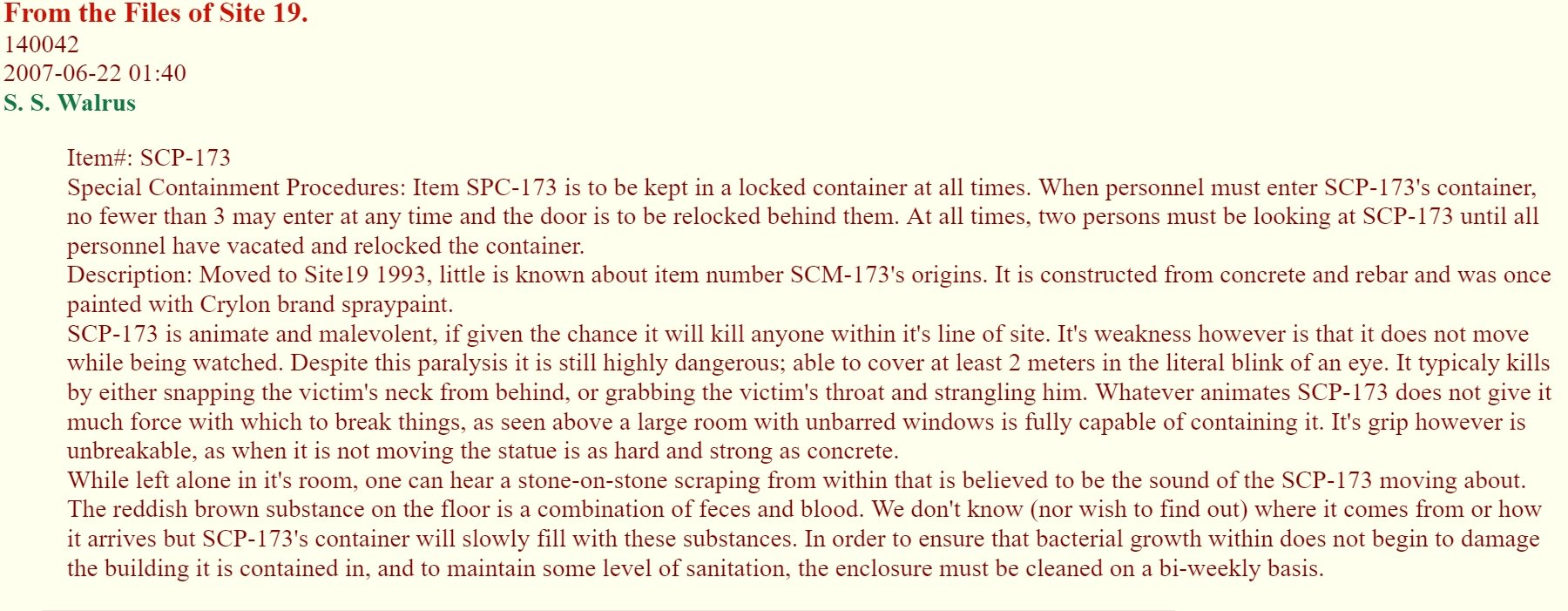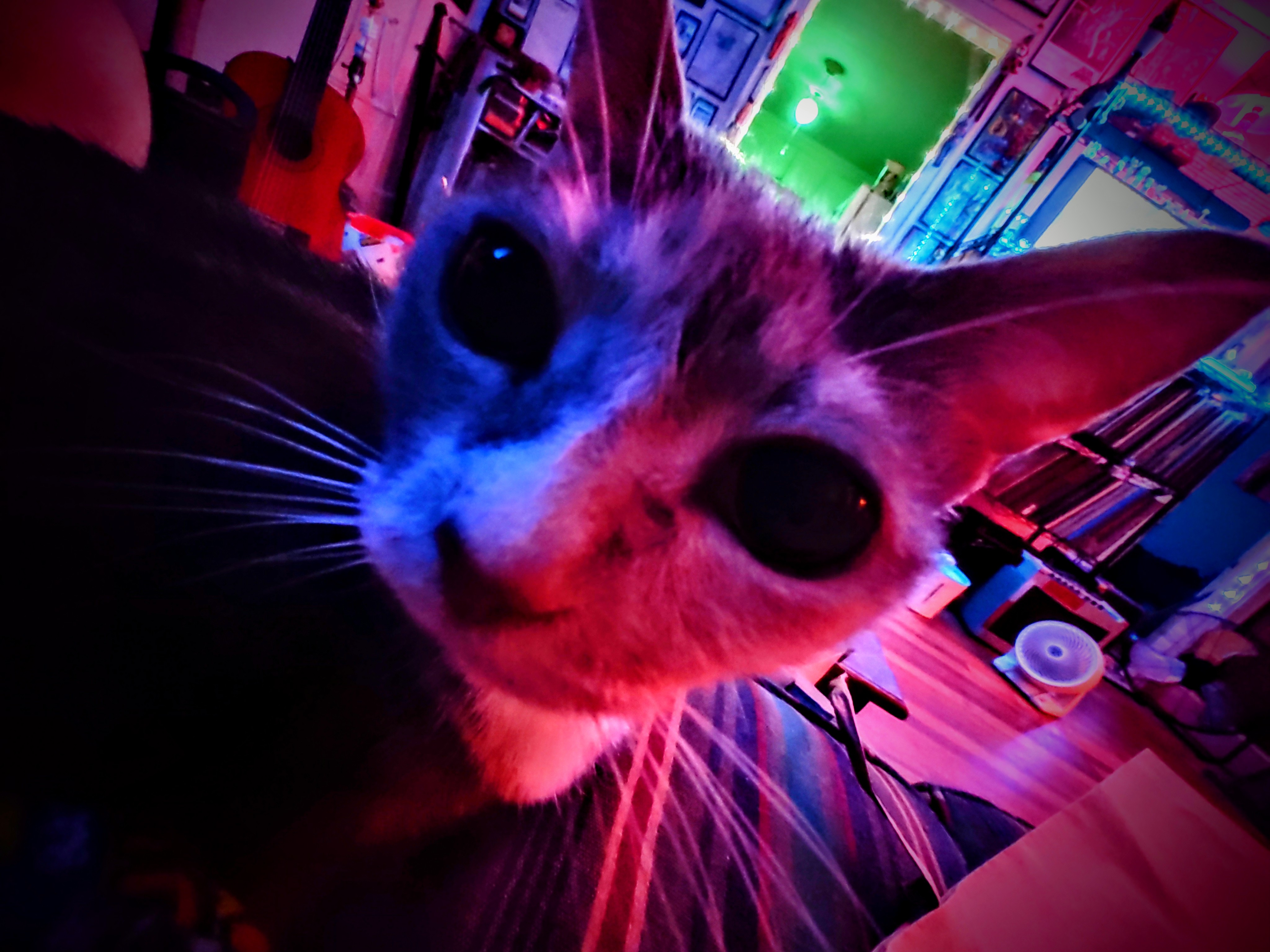The Weeping Angels apparently originated with Steven Moffat seeing a statue of a weeping angel in a structure in a cemetery and returning later to find out it was gone. At least according to this RadioTimes article. They first appeared in 2007 in the episode Blink.
I am wondering if this mechanic has been done before though?
It’s become quite common in the indie horror scene.
In the 2007 video game Sherlock Holmes: Nemesis Watson would not move if in the player’s view but would teleport behind the protagonist when given the opportunity. A video of it can be found here.
Considering this could be an easy place holder for developers or a way to get around programming walking animations all together I’m surprised no one took the idea and ran with it before then.
All that said it could have been used in books or movies. Maybe a twist on some other vision-centric myth like Medusa or Orpheus and Eurydice?
Boo from Super Mario only moves when your back is turned
It originated in Super Mario Bros 3 in 1988.
No more dong matcha for me, thank you
Good point. I don’t know how I didn’t think of that
When I saw Dr. Who, I thought you were going to say this was from an episode in the 60’s or something, haha
Statues (game) has been around since the eighties at least, and was one of the inspirations for the weeping angels.
Also, cats https://youtu.be/NbwpgyRUv5g
That Wikipedia link doesn’t actually go to an article
It does in the web version. :/ Which client are you using?
For me in Jerboa the closing parenthesis is not included in the link, so when clicked it can’t find that article. This should work:
[Statues (game)](https://en.m.wikipedia.org/wiki/Statues_(game))testing: Statues (game)
edit: yep, works
Thanks! Annoying behavior of web client. If it wasn’t stored as a link, it shouldn’t render it as one.
Yup, that was the issue! I can see it now lol I’m on Jerboa too
Neither link is working for me in Mlem
Perhaps one’s supposed to escape them with backslashes like so
[Statues (game)](https://en.m.wikipedia.org/wiki/Statues_\(game\))edit: This still works for me,should have thought of it sooner…
That one did work in Mlem
There we go! Thanks
Neither of the links work for me. The closing parenthesis still missing on both. I’m on Sync for Lemmy.
Works fine for me on Boost
Also from 2007 (before Blink aired) someone posted to 4chan a similar creepypasta that would become the first entry in the SCP Foundation.

Funny enough, a number of years ago a giant 4chan archive surfaced which included a lot of the very first SCP posts that had been lost. It actually confirmed that 173 was posted after Blink aired, meaning it was almost certainly inspired by the episode. Not that it makes the SCP worse, but it’s some interesting lore.
Good to know, thanks!
Cats do it and people have been living around cats for thousands of years
That was adorable.
I was going to say, I think this originated with cats!
Cats are scary as fuck.
The hedge animals from Stephen King’s “The Shining”, 1977, was a great part of the book that didn’t make it to the movie.
There was a segment in the 2005 game “Condemned: Criminal Origins” where mannequins in a department store at night would only move (and surround you) when you weren’t looking. Scared the shit of me way back then.
Neat. I’ve had that on my list of games I should play for a while now
It’s kind of an inversion of “don’t look back”, which is thousands of years old.
“Don’t not look.”
The ghosts in Super Mario Brothers 3 (1988) would pursue Mario only when he looked away. When he faced them they would stop and hide their faces.
SMB3 was from 1988? Lies.
Released October 23, 1988… In Japan.
Us gaijin did not get it until 1990.
this is how cats have operated since the beginning of time.
Check out They Bite by Anthony Boucher, written in 1943.
Edit: this is my favorite horror short story. Read it at night if you want to start jumping at every shadow in the corner of your eye for the next three days or something.
From what I remember they didn’t intend for Watson to behave that way, they just forgot to add the animations to him.
In physics quantum particles have been proven to behave differently when they are being observed, maybe he got the idea there?
“Observation” in quantum mechanics doesn’t mean a person looking at them, it means taking a measurement, which involves interacting with the particles somehow. It’s that interaction that causes the particles to behave differently. In other words, photons behave as a wave (moving according to a wave function) until another particle interacts with them, at which point they behave as a particle (moving in a straight line). See the various different double slit experiments for evidence of this.
I thought the delayed choice quantum erasure experiment showed it wasn’t the act of measurement that collapses the wave, but rather it depends on whether the information regarding its path was retrievable or not.
Scarcelli et al. (2007) reported on a delayed-choice quantum-eraser experiment based on a two-photon imaging scheme. After detecting a photon passed through a double-slit, a random delayed choice was made to erase or not erase the which-path information by the measurement of its distant entangled twin; the particle-like and wave-like behavior of the photon were then recorded simultaneously and respectively by only one set of joint detectors
Yeah, I guess in my statement I should have said “unless” instead of “until”, because it’s not time dependent. But it’s still the act of measurement, not the act of a conscious person looking at that measurement, that causes the collapse of the wave function.
it’s still the act of measurement, not the act of a conscious person looking at that measurement, that causes the collapse of the wave function.
That’s not the case here; when particles are measured and the which path information is erased/nonrecoverable it remains a wave:
what makes this experiment possibly astonishing is that, unlike in the classic double-slit experiment, the choice of whether to preserve or erase the which-path information of the idler was not made until 8 ns after the position of the signal photon had already been measured by D0.
That may not be the correct way of saying it. You can equally explain the data by phrasing it, “when the photon remains a wave, the which path information is nonrecoverable.”
Moreover, it’s observed that the apparent retroactive action vanishes if the effects of observations on the state of the entangledsignal and idler photons are considered in their historic order. Specifically, in the case when detection/deletion of which-way information happens before the detection on D0, the standard simplistic explanation says “The detector Di, at which the idler photon is detected, determines the probability distribution at D0 for the signal photon”. Similarly, in the case when D0 precedesdetection of the idler photon, the following description is just as accurate: “The position at D0 of the detected signal photon determines the probabilities for the idler photon to hit either of D1, D2, D3 or D4”. These are just equivalent ways of formulating the correlations of entangled photons’ observables in an intuitive causal way, so one may choose any of those (in particular, that one where the cause precedes the consequence and no retrograde action appears in the explanation).
The total pattern of signal photons at the primary detector never shows interference (see Fig. 5), so it is not possible to deduce what will happen to the idler photons by observing the signal photons alone. In a paper by Johannes Fankhauser, it is shown that the delayed choice quantum eraser experiment resembles a Bell-type scenario in which the paradox’s resolution is rather trivial, and so there really is no mystery. Moreover, it gives a detailed account of the experiment in the de Broglie-Bohm picture with definite trajectories arriving at the conclusion that there is no “backwards in time influence” present.[23] The delayed-choice quantum eraser does not communicate information in a retro-causal manner because it takes another signal, one which must arrive by a process that can go no faster than the speed of light, to sort the superimposed data in the signal photons into four streams that reflect the states of the idler photons at their four distinct detection screens.[note 2][note 3]
But more importantly, you will get the same results regardless of whether a human being is there to observe it. It’s the detection of the photon (by way of interacting with the photon detector) that matters, not whether there is a person there to observe the detection.

There’s also SCP-173 who was originally posted as a creepypasta on the /x/ (paranormal) board of 4chan on June 22, 2007












